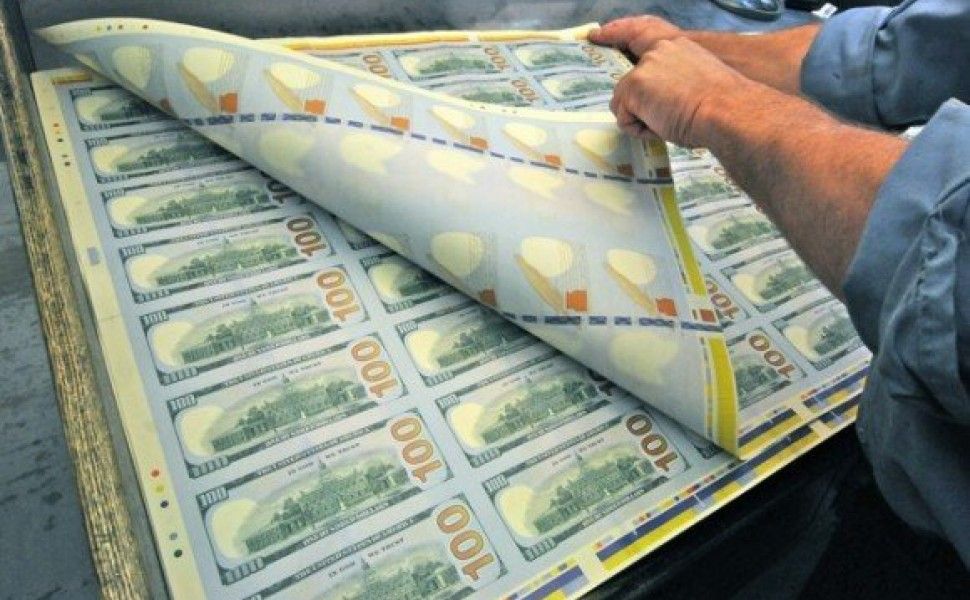Χρήση nano-code για την ανίχνευση πλαστών χαρτονομισμάτων
Επιστημονική ομάδα του 'South Dakota School of Mines and Technology' εφηύρε μια νέα μέθοδο για την ανίχνευση πλαστών χαρτονομισμάτων κάνοντας χρήση των λεγόμενων nano-codes. Το nano-code είναι στην ουσία ένας QR κωδικός αποτελούμενος από νανοσωματίδια συνδυασμένα με μπλε και πράσινη φθορίζουσα μελάνη, ορατός μόνο με τη χρήση λέιζερ εγγύς υπερύθρου (NIR).
Οι κωδικοί παράγονται με ειδικό εξοπλισμό CAD (Computer Aided Design) και στη συνέχεια μπορούν να ψεκαστούν σε επιφάνειες όπως χαρτί, πλαστικό και γυαλί για να επισημάνουν τη γνησιότητα χρημάτων ή άλλων πολύτιμων αντικειμένων. Όσο για τη διάρκεια τους, τα αποτελέσματα των πρώτων δοκιμών έδειξαν ότι εξακολουθούσαν να είναι αναγνώσιμοι μετά από πολλά σκαναρίσματα ή ακόμα και κακή χρήση.
Ακολουθεί το επίσημο δελτίο τύπου:
New nano-code ups the fight against counterfeiters
PARIS - Scientists on Wednesday reported they had invented an invisible tag using the widely-used "quick response" code to help thwart banknote forgers and criminals who sell bogus drugs or fake vintage wine.
The QR code is a square of black and white pixels that can be scanned by a smartphone, which then links to an Internet address.
It is being used more and more by museums and companies who want to provide additional information about an exhibition, product or service, but the idea here is to use it as a form of authentication.
Writing in the British journal Nanotechnology, materials engineers led by Jon Kellar at the South Dakota School of Mines and Technology says their invention comprises a QR code made of nanoparticles that have been combined with blue and green fluorescent ink.
The code, generated with standard computer-aided design (CAD) equipment, is sprayed onto a surface -- paper, plastic film, office tape, glass -- using an aerosol jet printer.
It remains invisible until the object is illuminated by a near-infrared laser.
The nanoparticles absorb photons at a non-visible wavelength but emit them in a visible wavelength, a trick called upconversion that causes the QR code to pop up almost like magic and allow itself to be scanned.
To see whether the code would stand some of the stresses of banknotes, the researchers printed it onto a piece of paper and then randomly folded it 50 times, without affecting its readability.
"We have done significant wear tests, and all indications are that the ink is very durable," Kellar told AFP in an email exchange.
He admitted though that it was not the final answer to forgers.
"We believe it raises a bar that needs to be continually raised. Counterfeiters are very clever and have access to technology, so we will continue to improve our technology."
The study's lead author, Jeevan Meruga, said the innovation offers many options for an upgrade.
"We can take the level of security from covert to forensic by simply adding a microscopic message in the QR code, in a different coloured upconverting ink, which then requires a microscope to read the upconverted QR code," he said.
The technique is simple and not time-consuming, according to the scientists.
Printing en masse for commercial use would only take about 10-15 minutes.
"We have not as of yet done a critical review of costs, so we cannot say anything (about prices) at this point," said Kellar in response to a question.
Near-infrared lasers are quite cheap and easy to operate, and could be used for authentication "outside of the lab" provided the eyes are protected, he said.






